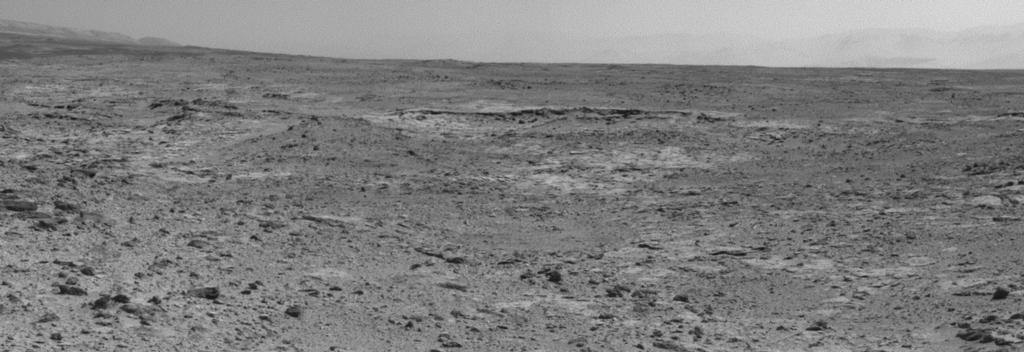NASA’s Mars rover Curiosity completed its first two-day autonomous drive Monday, bringing the mobile laboratory to a good vantage point for pictures useful in selecting the next target the rover will reach out and touch.

The low ridge that appears as a dark band below the horizon in the center of this scene is a Martian outcrop called “Cooperstown,” a possible site for contact inspection with tools on the robotic arm of NASA’s Mars rover Curiosity. Image credit: NASA.
When it drives autonomously, the rover chooses a safe route to designated waypoints by using its onboard computer to analyze stereo images that it takes during pauses in the drive. Prior to Monday, each day’s autonomous drive came after a segment earlier that day that was exactly charted by rover team members using images sent to Earth. The Sunday-Monday drive was the first time Curiosity ended an autonomous driving segment, then continued autonomously from that same point the next day.
The drives brought Curiosity to about 262 feet (about 80 meters) from “Cooperstown,” an outcrop bearing candidate targets for examination with instruments on the rover’s arm. The moniker, appropriate for baseball season, comes from a named rock deposit in New York. Curiosity has not used its arm-mounted instruments to examine a target since departing an outcrop called “Darwin” on Sept. 22. Researchers used the arm’s camera and spectrometer for four days at Darwin; they plan to use them on just one day at Cooperstown.
Starting to use two-day autonomous driving and the shorter duration planned for examining Cooperstown serve to accelerate Curiosity’s progress toward the mission’s main destination: Mount Sharp.